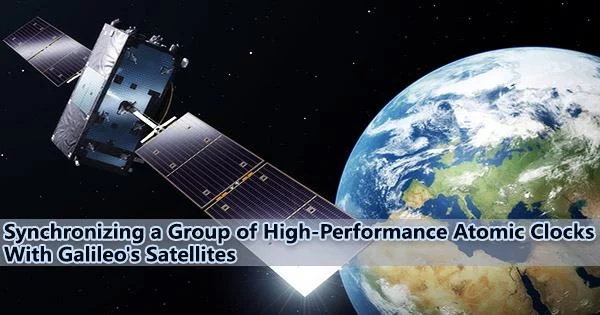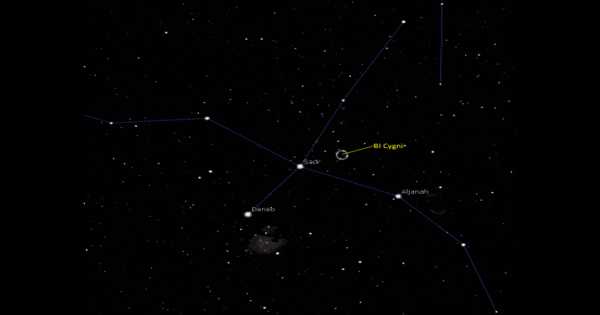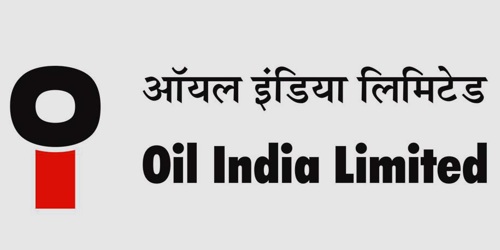Atomic clocks are incredibly precise timekeeping devices that use the vibrations of atoms to measure time. They are used in a wide range of applications, from scientific research to GPS navigation to telecommunications. Atomic clocks are also used as the basis for international time standards and are used to synchronize clocks around the world.
The world’s most accurate satellite navigation system, Galileo from Europe, gives its four billion users time accuracy down to the millimeter. The atomic clocks on board each satellite, which provide precise timekeeping that is maintained to a few billionths of a second, are a crucial component in ensuring that this continues to be the case.
These clocks are called atomic because their “ticks” come from ultra-rapid, ultra-stable oscillation of atoms between different energy states. Maintaining this performance necessitates even more precise clocks on the ground in order to keep the satellites in sync and provide users with stable time and positioning.
ESA’s ESTEC technical center in the Netherlands is continously monitoring the “Galileo System Time” at the heart of Europe’s satellite navigation system on an independent basis from the operational Galileo system itself.
For this purpose, the organization keeps a “ensemble” of high-performance atomic clocks in thermally regulated cleanroom settings in its UTC Laboratory. With the ability to monitor and compare them, this group of refrigerator-sized atomic clocks offers reliable, accurate timing that is often accurate to a billionth of a second, which is over ten times better than Galileo System Time.
UTC(ESA) is an engineering tool that can be used for all kinds of purposes. So for instance we are currently looking into the performance of time transfer via optical fiber with the Dutch VSL National Metrology Institute, as a means of exporting precise time to wherever it is needed, along with assessing Galileo performance, candidate future hardware and services.
Pierre Waller
Helping set global time
Pierre Waller, overseeing the Lab, explains: “Our UTC Lab is so named because it along with the Navigation Support Office’s similar clocks operated at ESOC in Germany is used to set a common timescale called UTC(ESA), which in turn is one of the inputs for the setting of Coordinated Universal Time, UTC the world’s reference timescale maintained by the Paris-based Bureau International des Poids et Mesures, BIPM.”
The group of atomic clocks at ESTEC has been operating consistently for more than ten years today, withstanding the COVID-19 epidemic and a move to a new location when the clocks were gradually moved and re-synchronized from their previous location. The additional contribution of the clocks located at ESOC since November 2021 has further boosted UTC(ESA)’s robustness.
ESA microwave engineer Cedric Plantard comments: “To measure anything properly, a suitable yardstick is essential. So UTC(ESA) can be used to perform an independent check on Galileo timing performance, as well as assessing the performance of candidate atomic clocks for the coming set on-board of Galileo Second Generation satellites, or any other tests requiring ultra-stable and accurate time reference.”
“Think of the clocks here as working together in this carefully maintained environment like an orchestra, contributing to a weighted average time value. If one clock goes out of range of the rest then an alarm is triggered automatically.”
Counting nanoseconds to measure distance
Why does exact positioning require precise timekeeping? Because of the way Galileo works, turning timing into distance. The idea is similar to how kids are taught to calculate the distance of a thunderstorm: after seeing a lightning flash, they should count down the seconds until they hear a crack of thunder. Except that the timing in this instance is measured in billionths of a second, times the speed of light.
Galileo satellites orbit 23,222 km above Earth, transmitting signals downward that incorporate a time stamp. A satnav receiver on the ground picks up four or more Galileo signals to fix its position on the ground. The discrepancy between the signal time stamp and the receiver time indicates that by the time the signals arrive to it, they have traveled from orbit for about a twelveth of a second.
The receiver determines its precise distance from each satellite in orbit by multiplying this difference by the speed of light, which is approximately 30 cm per nanosecond, or a billionth of a second. It then integrates these measurements in a triangulation to determine its total position.
The positioning value already reaches a meter in extent if the clocks are off by more than three nanoseconds. A second’s error would mean the receiver might as well be on the Moon.
The master clocks onboard each satellite measure time with a precision of one second every three billion years thanks to twin “passive hydrogen maser” atomic clocks. A second, independent source of time that is accurate to three seconds in a billion years is two tiny rubidium clocks.
But in practice these onboard clocks are prone to drift slightly over time. So a worldwide network of Galileo ground stations keeps a continuous tab on the satellites’ signals, to identify any clock drift compared to “Galileo System Time” (as well as any slight orbital drift).
Any faults are subsequently fixed in an updated navigation message, assembled, and uploaded to the satellites for retransmission every 100 minutes or fewer in the form of Galileo navigation signals.
The best time for time
A huge improvement in global timing accuracy is being made possible by the widespread use of Galileo and the other global satellite navigation systems, each of which has its own system times (and offsets from UTC). This accuracy is used, for example, to synchronize communications, financial, and power networks.
But in the end, the only sure way to check the performance of a clock is with another clock hence the need for UTC(ESA) and comparable reference timescales.
“UTC(ESA) is an engineering tool that can be used for all kinds of purposes,” adds Pierre. “So for instance we are currently looking into the performance of time transfer via optical fiber with the Dutch VSL National Metrology Institute, as a means of exporting precise time to wherever it is needed, along with assessing Galileo performance, candidate future hardware and services.”
















